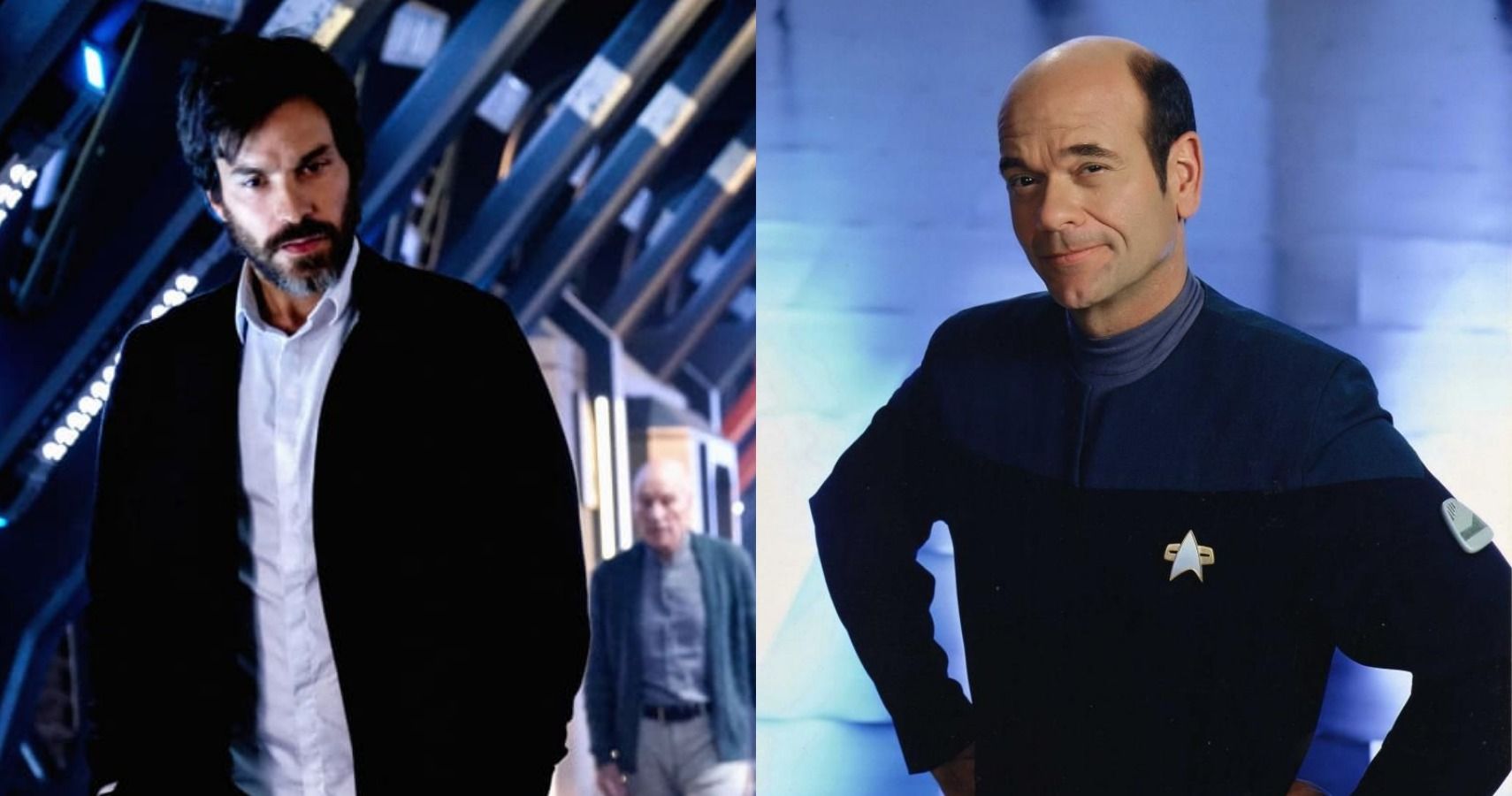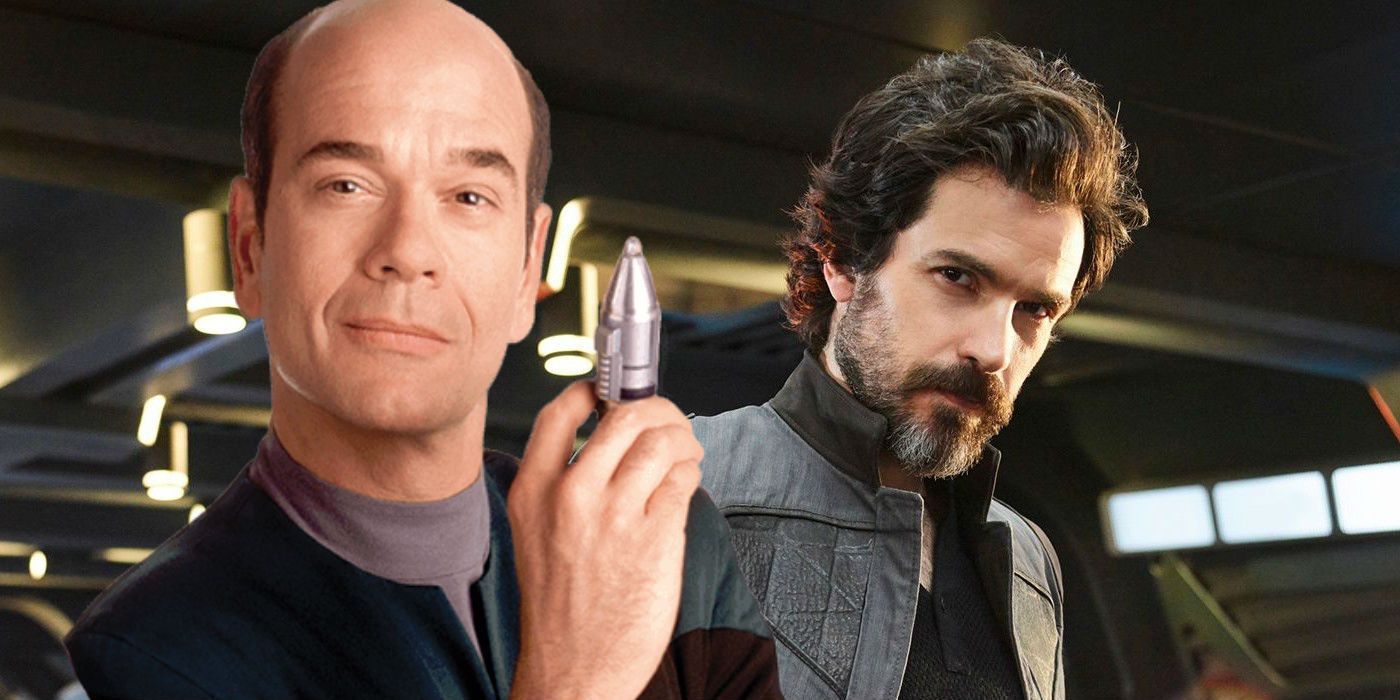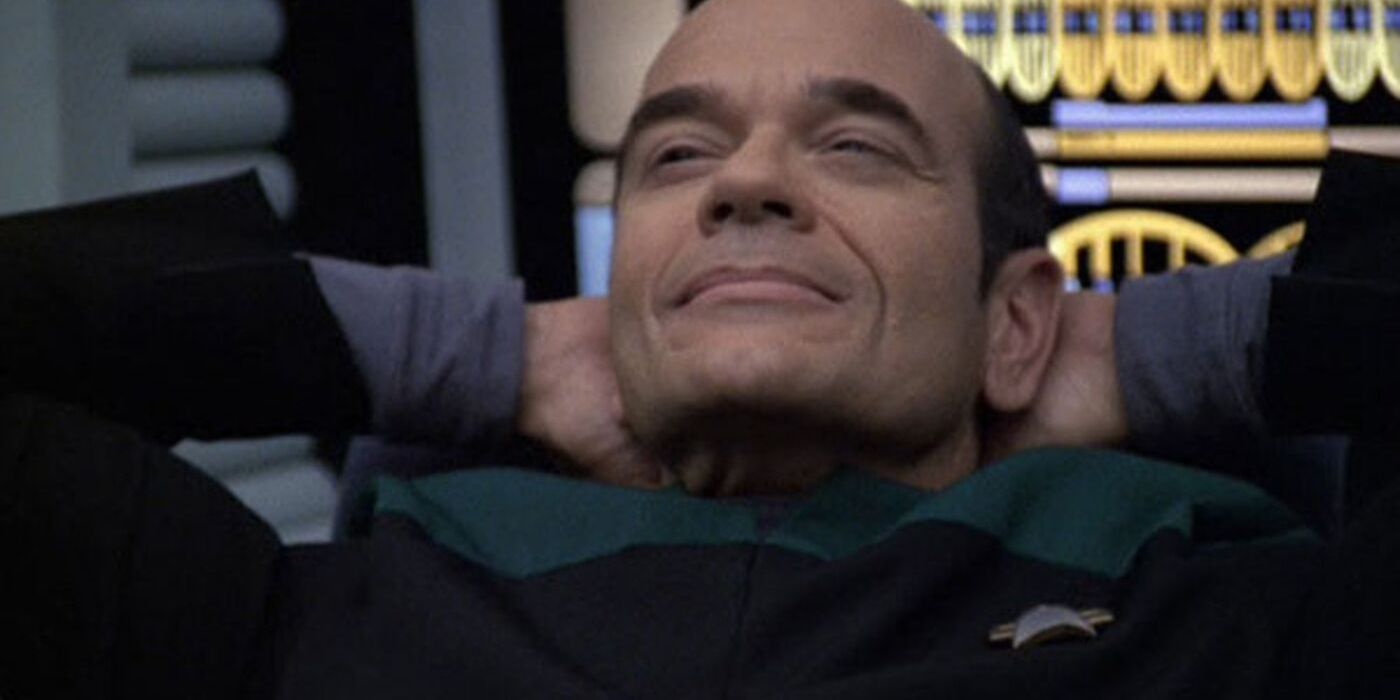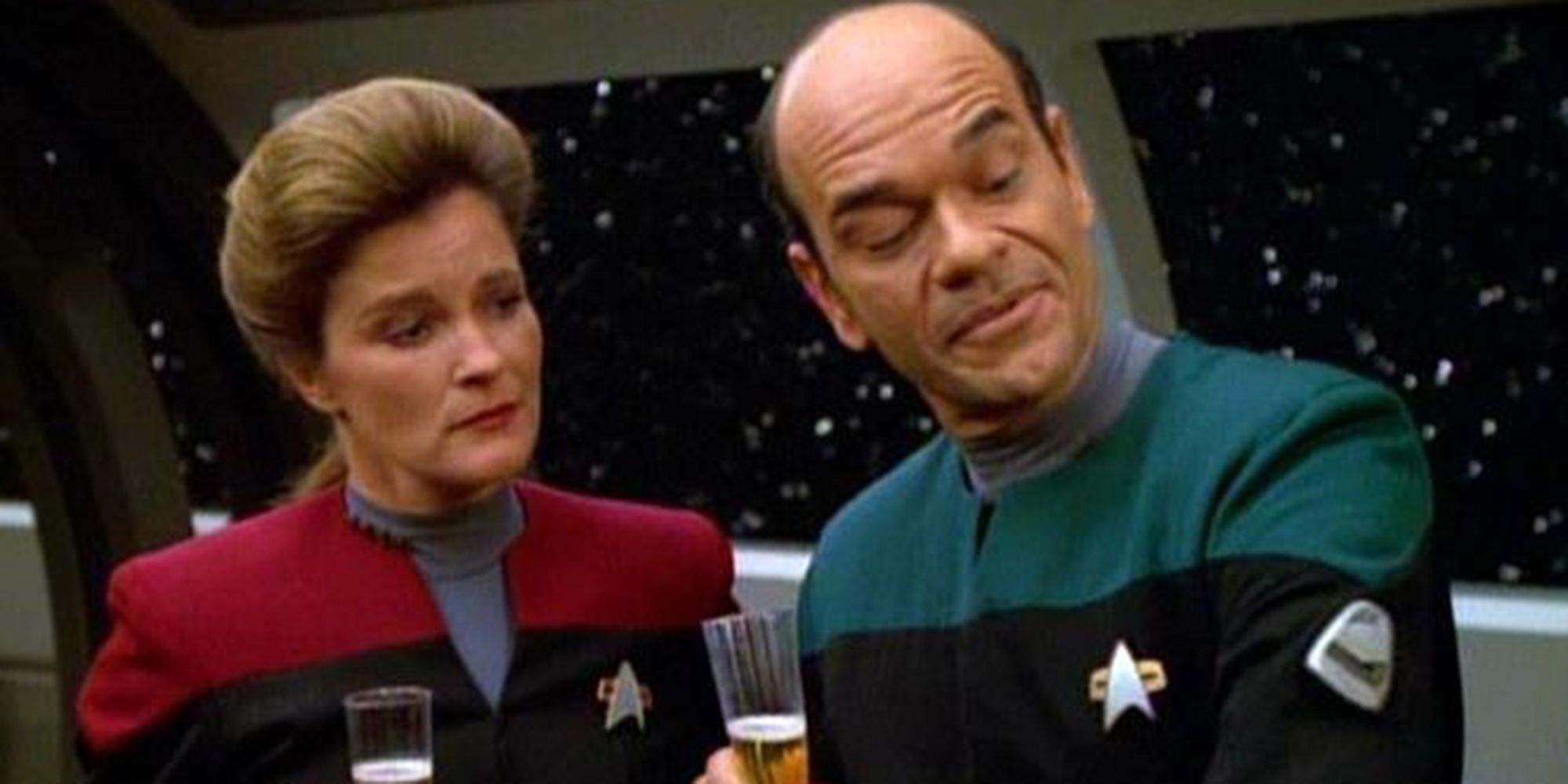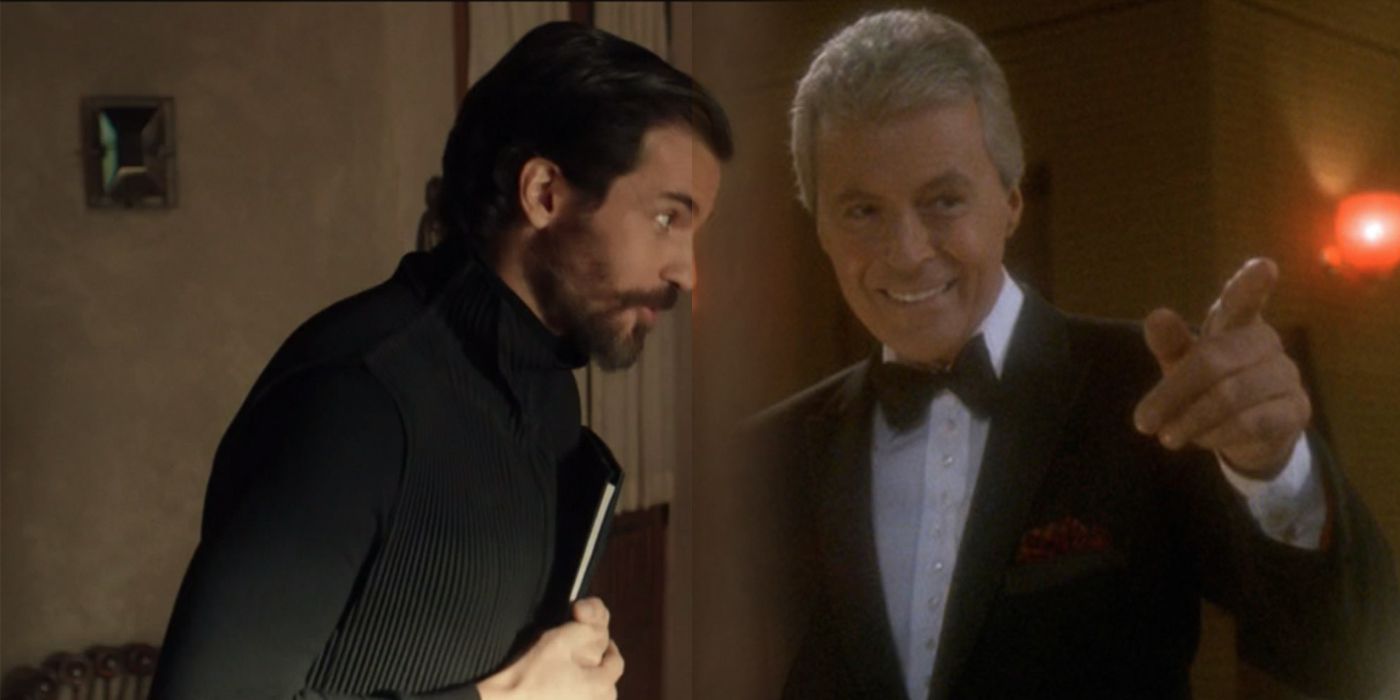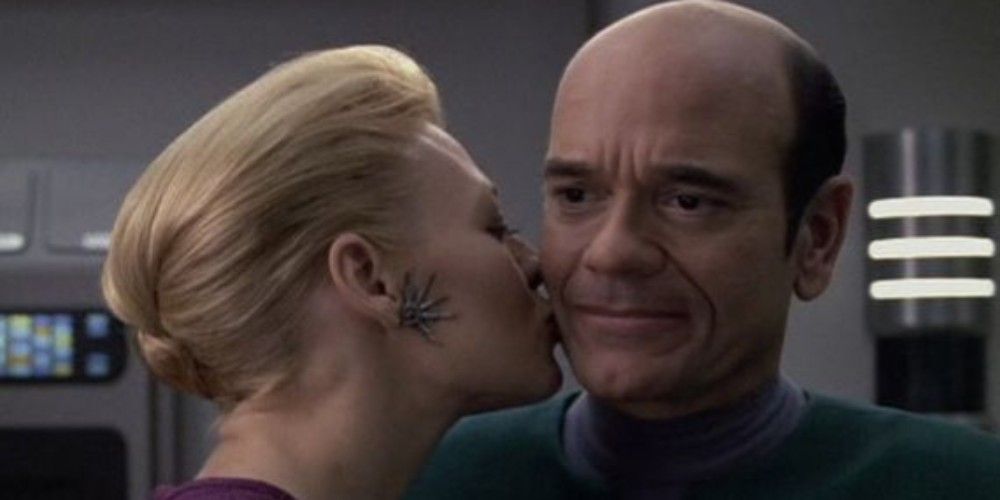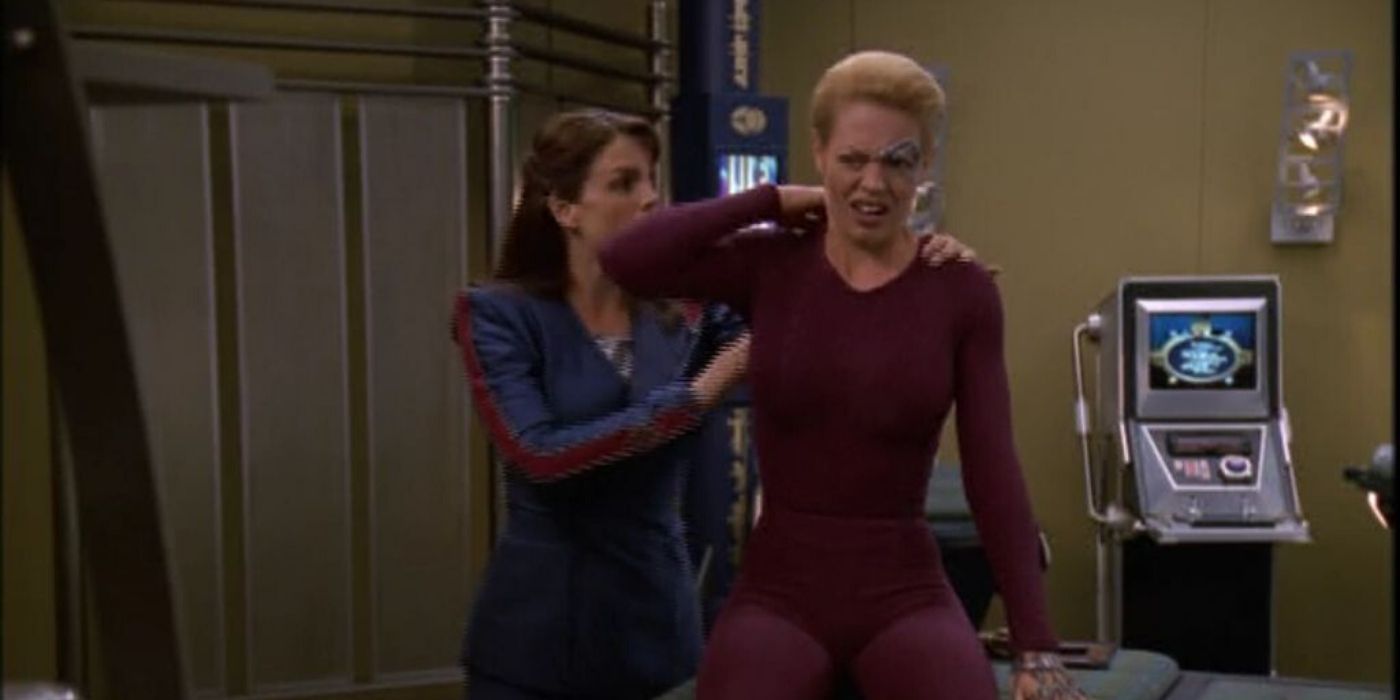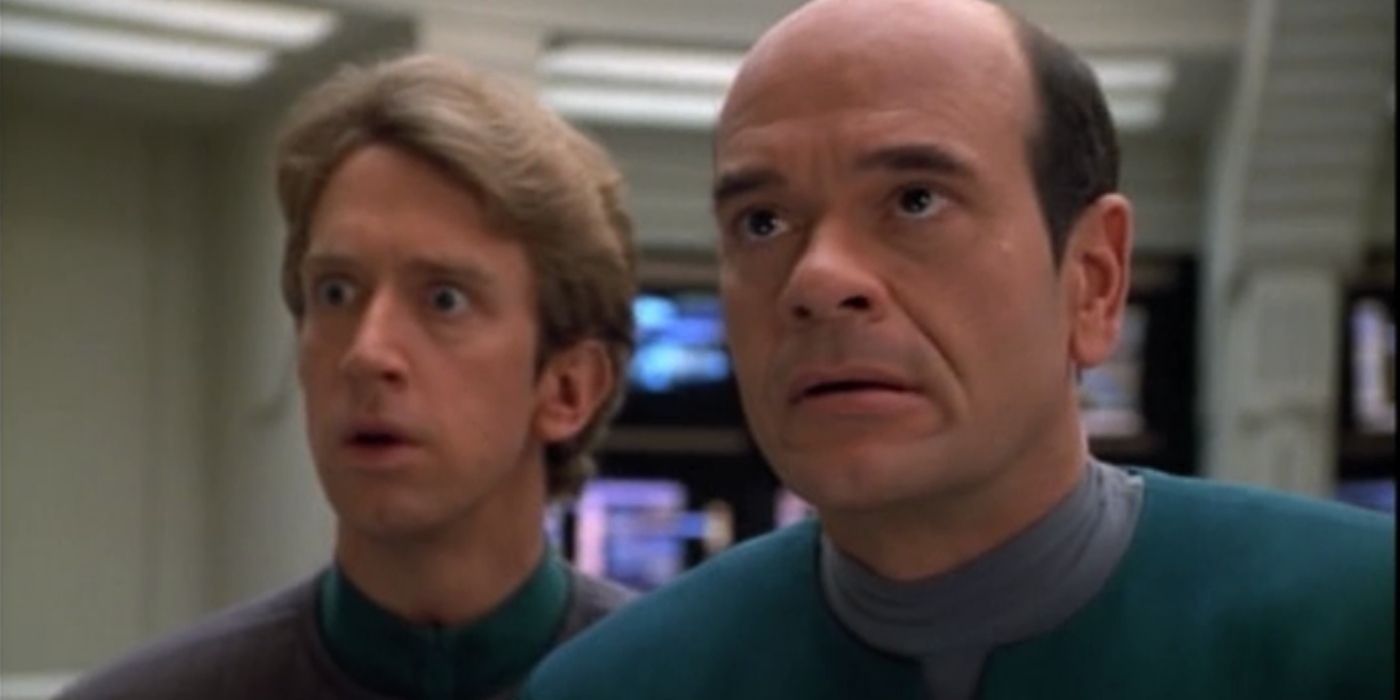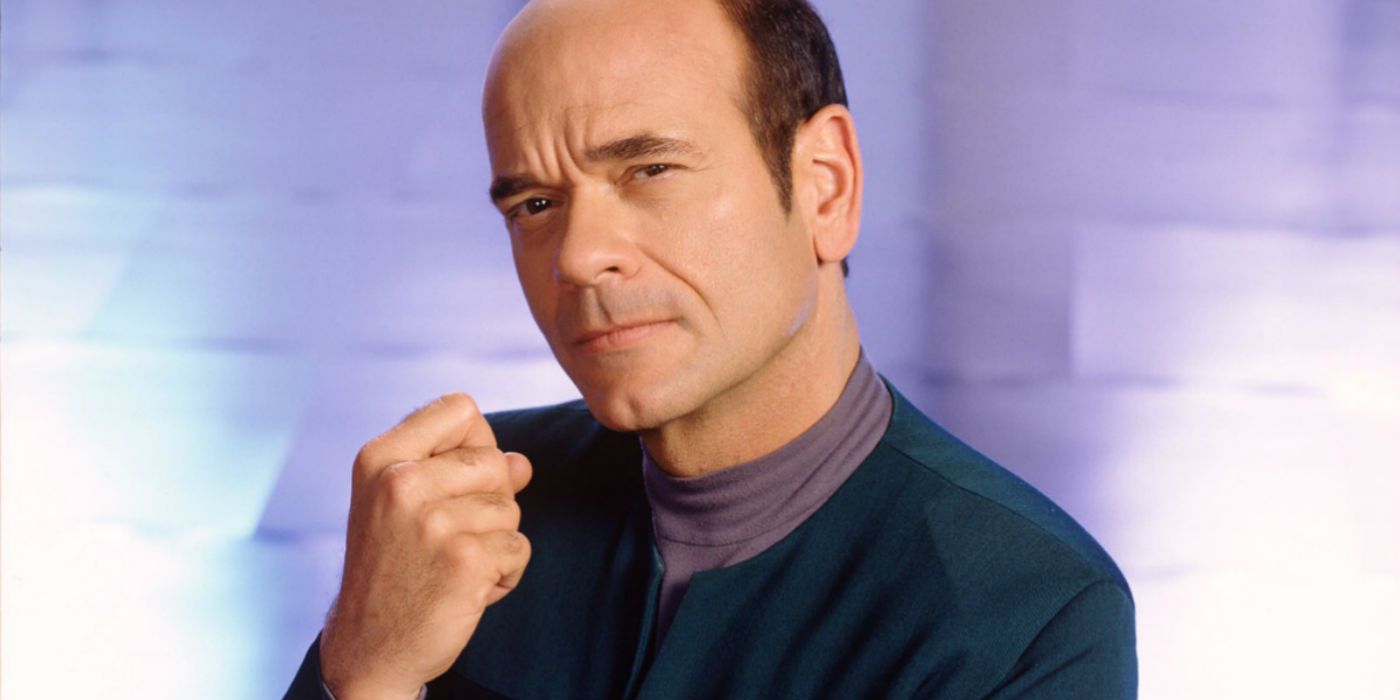In the newest Star Trek series, Picard, one of the most fascinating thing going on in the background are Rios' holographic programs. Since he runs this ship on his own, without much of a crew, he relies on the EMH and such to keep him safe and keep him company. This isn't the first time a ship has relied on an EMH before.
Star Trek: Voyager lost their chief medical officer in their trip to the Delta Quadrant. Because of this, they had to use their EMH as their main physician. They named him "The Doctor" and he became a vital part of their ship-wide family. He even saved the ship on his own a few times. Between the Doctor and Rios' EMH, let's talk about ten things you didn't know about EMHs.
There Were Multiple Models
Even though Voyager's Doctor is the most popular EMH, there were many other versions made. For example, when the Doctor was flung across space in "Message in a Bottle", he met up with a newer, more clean cut model. Unfortunately, he was told his model got discontinued for being too cranky.
Now, in Picard, fans also get to see a future model in Rios' EMH. Clearly, now EMH's can have their appearance matrices change to be whatever the user wants. And, for who knows what reason, Rios chose to have the EMH look just like him. While it'd be funny to think that all Starfleet ships have a crabby Robert Picardo on hand, they all have a different variety.
They Weren't Meant To Be Ship Doctors
One of the first things that happened in Voyager was several officers, including their ship's chief medical officer, losing their lives while being tossed to the Delta Quadrant. Because of this, Janeway made the call to turn him on longer and the EMH became Voyager's only lead doctor on-board.
However, this is never supposed to be the case. They were only made to assist in certain situations, at best helping the CMO during a crisis. Instead, the Doctor had to cover it all on his own. This also included being on for much longer than any hologram ever is meant to be. But, apparently Picard's Rios likes breaking that rule, too.
One Pioneered Hologram Rights
During his time on Voyager, The Doctor when from being a typical hologram to a much more complicated person with his own goals and dreams. One thing that he really loved was the arts. Characters could find him singing, acting, or writing stories throughout the series.
However, when The Doctor wrote an entire novel and sent it to Earth for publishing, the publishing company tried to take over his rights because he was a hologram. In the same vein of "Measure of a Man" (but much more light-hearted), The Doctor won his creative rights and made the first big step in giving holograms rights of their own.
Their Program Was Faulty (In The Best Way)
EMHs were never supposed to be able to form the very human traits of aspiration, envy, pride. However, The Doctor's creator was a bit... flexible with his programming, basing their appearance and prickly nature on his own. This put his holograms on the path towards being able to expand on those very flawed human traits and become more than a simple hologram.
They weren't supposed to be able to, but The Doctor did. Over time, he fell in love, became a father, wrote a novel, learned how to command, and so many other things that he never should've been capable of.
They (Initially) Have No Control Over Themselves
When EMH's were made, every part of their existence was controlled by the humans around them. They were meant to listen to the crew's orders and couldn't even turn themselves on or off. The Doctor, in early season, often complained about people forgetting to turn him off, leaving him alone and trapped in sick-bay for hours with nothing to do.
With time, Voyager's crew gave The Doctor more freedoms. This included control over his own systems and even a mobile emitter so he could walk around the ship, not just be trapped in the few rooms with hologram emitters.
They Can Fall In Love
One of the first things that completely changed the Doctor's perspective on himself was falling in love. He, like the rest of the crew, at first saw himself as a simple hologram that was being left on too long. However, the more emotions he felt and connections he made with other people, the more he realized there was a lot more going on with him. Though it often broke his heart, The Doctor loved openly and it was one of the most endearing and human things about him. He deserved to be loved just like anyone else on the ship.
With The Right Tools, They Can Go Anywhere
If a ship comes with an EMH, the rule of thumb is that the EMH stays in sick-bay and goes nowhere else. However, that wasn't always the best case scenario when it came to Voyager and their Doctor. After all, he was their only medical professional and he couldn't leave that room.
Eventually, B'Elanna and the engineering crew built him a mobile emitter. This let him go wherever he wanted, as long as he attached the device to his body. It basically would download his program and emit it on a smaller scale across the ship. He even got to go on away missions. Holograms can definitely be more than meets the eye.
Some Races Hate Fully-Functioning Holograms
During their travels across the Delta Quadrant, the Voyager crew encountered many species. Some had bad history with holograms and reacted pretty violently when they found out Voyager had one as their Doctor. Picture the extreme measures the Romulans are taking against synthetics in Picard and that's about the level of hostility.
Once, The Doctor even had to hide in the cybernetic parts of Seven of Nine's brain to avoid being caught and deleted by some anti-hologram scientists and travelers. Their people forbade holograms from even coming into their system,
They Can Be Transported Across The Galaxy
In one of The Doctor's best solo episode, Voyager found a way to send his programming across the galaxy. His program got sent to a deep-space ship that had been taken over by Romulans and the only Federation crewman left capable was their own EMH. Together, they had to figure out how to stand each other and take the ship back from the invading Romulans.
"Message in a Bottle" was a great episode and showed off the unique science of holograms. That science was later used to send the Doctor back to Earth to try to help save his ailing creator's life. Also a fantastic episode and use of the Doctor's unique technological capabilities.
Voyager's Doctor Was Revolutionary
Before Deep Space 9's Vic Fontaine and Voyager's Doctor, holograms were never seen as real people, just fictitious fantasies that people played with. The closest before them that fans got to real sentience and respect was the infamous Minuet, who actually was an alien of sorts. And even Vic Fontaine was still a guy trapped in a holodeck, used for people's entertainment. The crew grew to love him, but his framing was still very "he is here to entertain humans".
The Doctor was revolutionary. He wasn't just there to entertain or assist. His life went beyond that, growing into a much more well-rounded and complex character than his programming initially allowed. He was revolutionary and in future Star Trek series, it might be neat to see how that changed hologram politics and treatment, just like how synthetic interest evolved because of Data.

